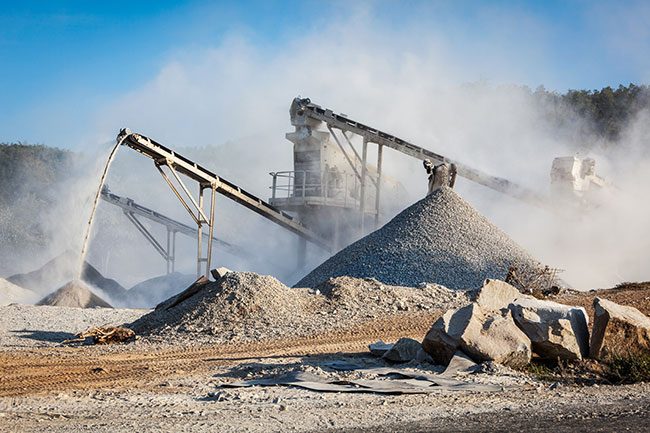Ever walked past a worksite and seen a cloud of dust hanging in the air? Maybe you’ve been that worker, cutting concrete or drilling stone, driving a machine at a dusty quarry thinking, She’ll be right. But here’s the thing—she won’t be.
Silica dust is an invisible threat that puts too many Kiwis at risk. It’s like asbestos was 50 years ago—by the time you feel the effects, it’s too late. Silicosis, lung cancer, chronic respiratory issues… all from tiny airborne particles that your lungs just can’t handle.
At the recent MinEx Workshop on silica dust, it was made very clear just how damaging and deadly silica exposure is and the difficulties of life with a silicosis diagnosis. Another point that hit home was that it wasn’t just quarry and machine operators who are exposed to silica dust. The admin staff, weighbridge staff, maintenance staff, and cleaning staff are all exposed to silica dust. It was stated at the workshop that 20-30% of staff in Australia that are exposed to silica dust are expected to be diagnosed with Silicosis. How scary is that?!
🔎 Workplace Safety: Are we focusing on the right things?
Monitoring is very commonplace in the industry (and a legal requirement), but lung function and health monitoring is almost like wearing a GPS watch while running; it tells you what’s already happened. It doesn’t stop exposure before it happens. Should we be more focused on controls and management of those controls to stop exposing the staff to silica dust? These controls are what will stop people from suffering from silicosis.
🧠 Let’s understand Silica!
Silica is a naturally occurring mineral and is found in around 60% of the earth’s crust. It is found in sand, stone, concrete and bricks to name a few. When these materials are drilled, ground or crushed into tiny particles, they can be breathed into the lungs. Our lungs have a natural defence mechanism that prevents dust and other particles from getting inside them, but when the dust particles are fine enough, they pass through those defence mechanisms and build up inside the lungs. This can lead to Silicosis, which is an incurable lung disease. It also increases the risk of lung cancer, kidney disease and obstructive pulmonary disease.
🛠️ Tech & Innovation: The Future of Silica Safety
The good news? Solutions exist. With the rate that technology advances, the quality and capabilities of engineered solutions are rapidly evolving. The real challenge is getting businesses to invest in these solutions before it’s too late. Systems like over-pressure and HEPA filter systems are designed to ensure that fine dust particles are kept outside of machine cabs and office rooms using over-pressure and HEPA filters to ensure the air inside of the cabs and offices are fine particle free. Some systems on the market also monitor the filter age, condition, and system fan speed. This can be seen in real time or the information stored and brought back up in a report later. All this captured data is stored on an online portal that can be used to support a business’s monitoring and to verify the effectiveness of controls implemented.
💭 The Bottom Line
Silica exposure should be treated like asbestos—something we actively work to eliminate, not just manage. If you’re an employer, are you doing enough? And if you’re a worker, are you speaking up when safety isn’t up to scratch?
Let’s stop normalizing the sight of dusty air and start prioritizing clean lungs.
What’s your experience with silica dust on worksites? Have you seen good safety practices in action, or is it still being brushed under the rug? Let’s talk. 👇
Written by Andrew Mann, Product Support Specialist at Landlogic.




